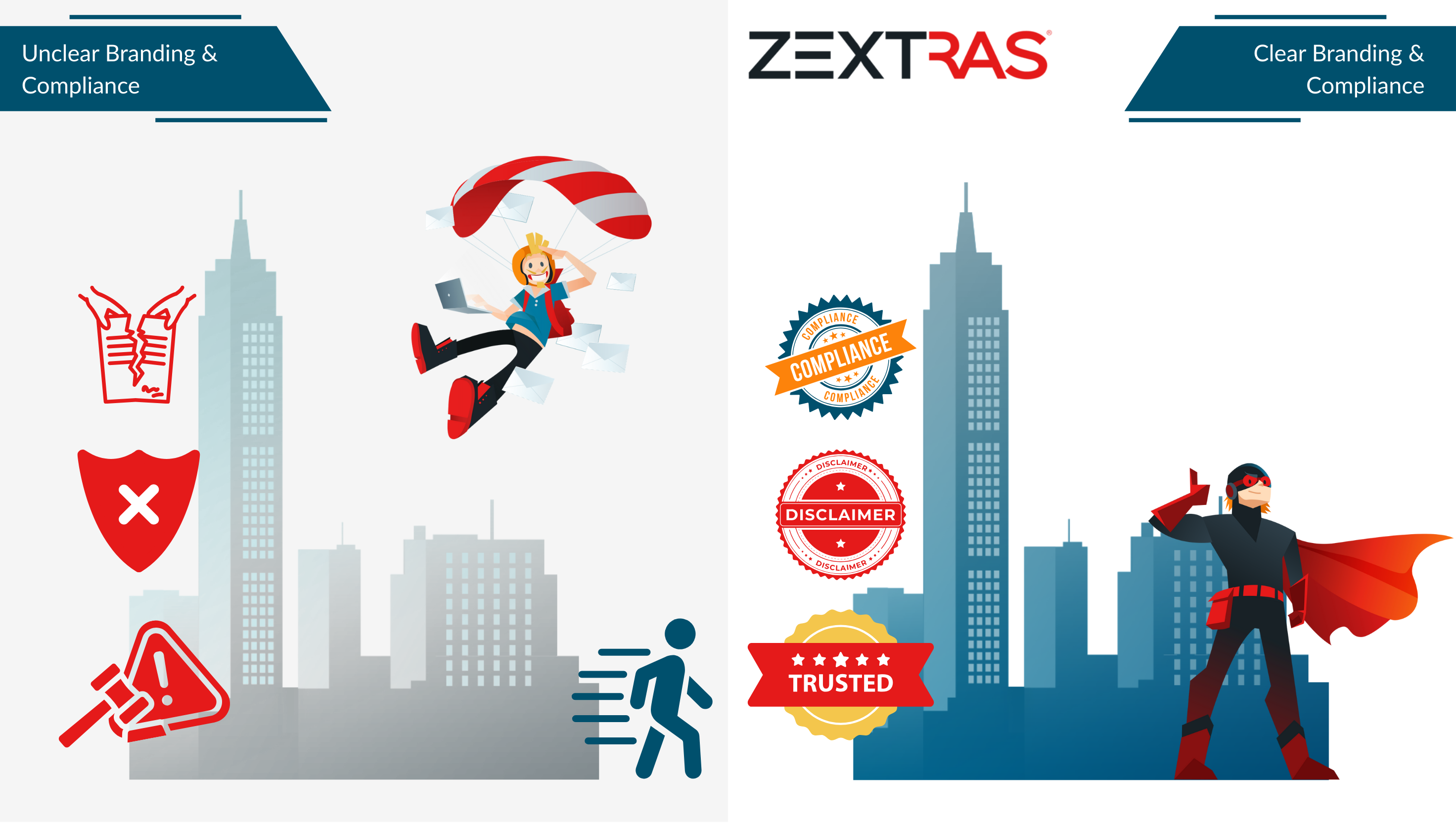- The Strategic Potential of Digital Workplace Solutions
- Email Disclaimers: The First Step to Keeping Yourself Safe Legally
- Legal Hold and eDiscovery in Hidden Compliance Crisis
- The Real Cost of Non-Compliance
- How to Use Integrated Solutions to Fill the Gap
- Taking Control of Your Digital Workplace Strategy
A major client of your business just asked that all conversations take place through your branded site. At the same time, your legal team learns that a lawsuit hold has been in place since a previous employee left. This means you need to ensure that all of your digital correspondence from the last three years is safe right now. It’s crucial to keep your professional brand strong and stay away from the compliance mistake that cost Meta €1.2 billion in 2023.
IT directors deal with this every day as they try to make sense of the convoluted digital world we live in. It’s not a lie. Experts believe that by 2025, the white-label SaaS business will be worth $315 billion. Also, 74% of businesses indicate that their workers still use communication techniques that aren’t controlled. This raises the key question that every business needs to answer:

The Strategic Potential of Digital Workplace Solutions
White labeling isn’t just about slapping your logo on someone else’s software—it’s about taking complete ownership of your digital presence.
There are still three main reasons why white labeling is so popular:
- Full brand ownership gives you a customized interface design that makes your business look genuine and like a leader.
- Instead of years, you can have enterprise-level appearance & reputations up and running in just a few months.
- Focus on your main business by using infrastructure that is well-known and can grow with your needs.
Email Disclaimers: The First Step to Keeping Yourself Safe Legally
Email disclaimers may seem like small legalese, but they are a key aspect of compliance that can have a big influence on your bottom line. The European Union’s Directive 2003/58/EC requires that business emails include certain information, but the standards vary by country. The consequences are not the same in every place.
European Union Compliance Fines:
- Ireland: Up to €2,000 for non-compliance
- Germany: Penalties reaching €5,000 for inadequate disclaimers
- France: €750 per infringement for missing required information
The laws and rules of the United States are equally as hard to understand. HIPAA requires healthcare facilities to use the correct privacy notices. Strict data protection laws in places like Singapore, Australia, Malaysia, and Indonesia require emails to have detailed privacy statements.
The bottom line? Email disclaimers aren’t optional—they’re essential risk management tools that demonstrate your organization’s commitment to regulatory compliance.
Legal Hold and eDiscovery in Hidden Compliance Crisis
Here’s a sobering reality: the global eDiscovery market is valued at $16.99 billion in 2024 and projected to reach $39.25 billion by 2032. This explosive growth isn’t driven by opportunity—it’s driven by necessity.
Document review costs account for 80% of total litigation expenditures, totaling over $42.1 billion annually. With 75% of the global population subject to modern privacy regulations by 2024, organizations can no longer afford to treat legal holds as an afterthought.
The consequences of inadequate legal hold processes are severe. In Klipsch Group Inc. v ePRO E-Commerce, the Second Circuit upheld a $2.7 million eDiscovery sanction for evidence spoliation in a case where actual damages were only $20,000.
The Real Cost of Non-Compliance
The financial services sector tells an even more concerning story about being non-compliant:
- Total fines: Over $2.6 billion imposed in two years
- Primary cause: Failure to capture digital communications
- Current risk: 74% of firms report employees likely still using unmonitored channels
- Personal liability: Regulators implementing “zero tolerance” with C-suite accountability
These aren’t just financial penalties—they represent operational disruption, reputational damage, and lost business opportunities that can fundamentally alter an organization’s trajectory.
How to Use Integrated Solutions to Fill the Gap
Modern digital workplace platforms are solving the brand-compliance challenge through unified architectures that deliver:
Core Integration Benefits:
- Automated compliance monitoring with real-time alerts and reporting
- Configurable disclaimer management for region-specific requirements
- Robust legal hold capabilities with automated preservation across all communication channels
- White-label branding features maintaining complete organizational control
Platforms like Zextras Carbonio exemplify this integrated approach, combining open-core flexibility with enterprise-grade security. Organizations gain reduced total cost of ownership, streamlined audit processes, and future-ready architecture that adapts to evolving regulatory requirements.
For organizations ready to take control of both their brand identity and compliance posture, the path forward requires understanding how these capabilities work together in practice.
Taking Control of Your Digital Workplace Strategy
The intersection of branding and compliance in digital workplace platforms isn’t just an operational necessity—it’s a competitive advantage. Organizations that master this balance position themselves for sustained growth while minimizing regulatory risk.
Ready to see how this integration works in practice? Our detailed analysis in “Simplifying IT Management: How Zextras Carbonio Enhances Administrative Control and Compliance” explores the specific features and implementation strategies that make comprehensive brand and compliance control possible.
